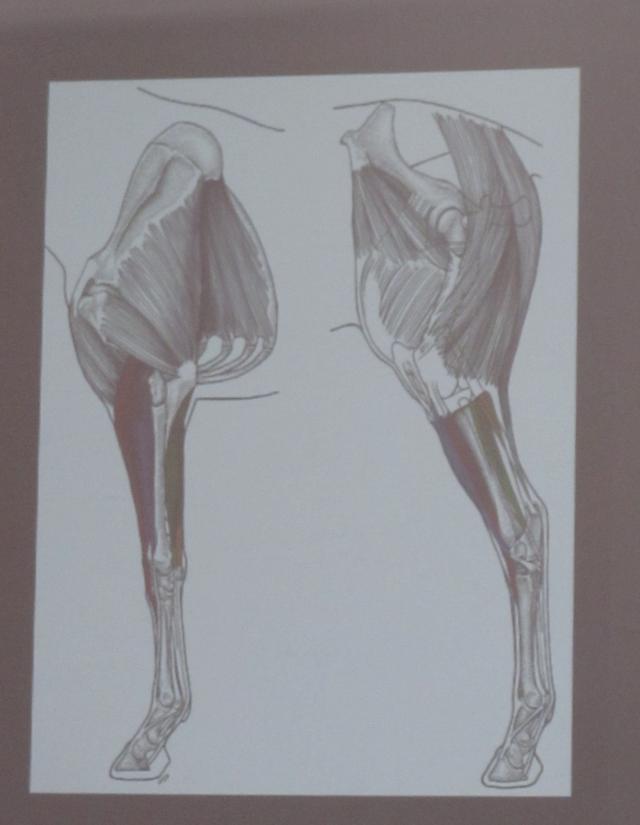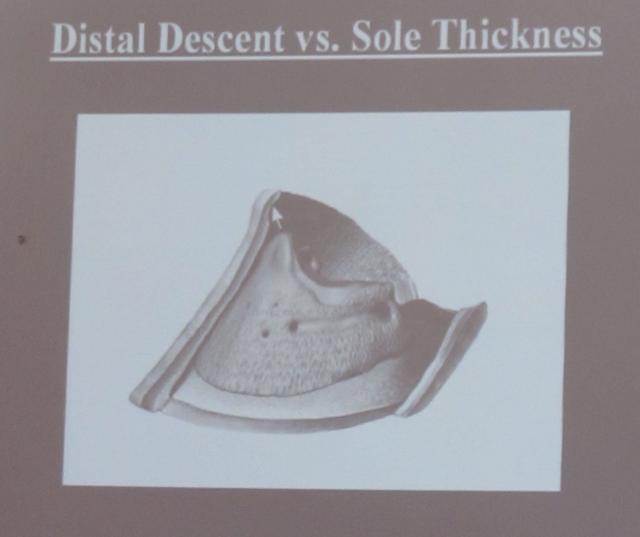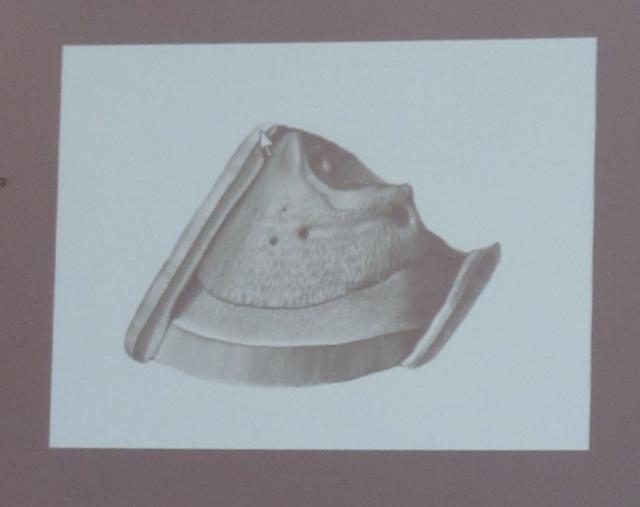Notes from a Clinic Hosted by Gene Ovnicek
You’ve no doubt heard of Natural Balance shoeing? Gene Ovnicek holds the patent for the system, and he was in Scottsdale, Arizona last weekend. He was talking about the findings from the latest study by the Equine Lameness Prevention Organization.
He presented data from a case study using over 150 horses.

He talked in some detail about the unified goal of all farriers and trimmers to trim the hoof in balance. The point of disagreement, he suggests, is whether or not hoof capsule distortions are properly taken into account when assessing a balanced trim. In other words, the industry falls short because it is mistakenly using external reference points to assess balance, when it should actually be using internal reference points.
The study data suggests:
- 90% of lameness is attributable to the occurrence of a greater distance forward of widest part of hoof rather than behind it.
- If the apex of the frog is long and skinny; the whole sole is forward, giving a false reading of the true apex of the frog.
- The greater distance forward of the widest part of the hoof; the greater the degree of lameness.
- The majority of lameness cases are found in base-narrow or pigeon-toed horses.
- Most lameness cases are found in hooves that are the high on lateral side. Retained sole can give a false reading of sole plane and cause the trim to be unbalanced, even though it appears balanced to the eye.
Challenging Historical Hoof Care Best Practices
Gene suggests commonly accepted practices may not make for a sound horse. His list of theories to challenge is as follows:
- The hoof wall should bear the weight.
- The frog is not needed for support.
- The bigger the foot, the better: a shoe that is bigger than the hoof adds stress to joints, and soft tissue. As well as a trim that leaves to much excess wall
- Don’t rasp off the outer hoof wall.
- Outer Hoof wall and P3 (coffin bone) should maintain equal, parallel angles.
- Pairs of feet should match.
- Medial and lateral balance should be determined by using a t-square.
Using the Wild Horse Card
Findings of studies on wild horses suggest that the hoof wall, sole and toe all share weight at the pillars.
In domestic horse husbandry, everything is different than horses in the wild:
- Housing
- Environment
- Exercise/activity
- Nutrition/diet
- Hoof care
Stalled horses, says Gene, develop thin soles and suffer from under-developed support at the digital cushion and lateral cartilages.
Another Wild Horse Card
Looking further into wild horses as a basis for determining a healthy hoof, Gene observes the following:
- Horses are biologically designed to have a lot of activity – 20 miles a day.
- The hoof is created by its environment.
- The hoof wall is often removed away completely, leaving the horse standing on the sole for most feral horses.
Most domestic barefoot horses, he says, still need some wall – equal with sole – to share weight. They simply do not have the integrity of internal structures of a feral horse hoof.

P3 is lower; the sole is thinner.

P3 is higher; the sole is thicker.
Interestingly, Gene’s study found that the more the flare and lameness, the more displacement of P3 (the coffin bone) into the hoof. And the more displacement of P3, the thinner the sole. He found feral horses that have short hoof capsules and the articulating joint of P3 in line with the hairline actually have very thick soles. And while many domestic horses have long hoof capsules, P3 has dropped down into the hoof and they have very thin soles.
Functional Medial/Lateral balance and Sole Thickness
The study shows sole thickness is very uniform for each horse. Trimming to a live sole plain will give a balanced medial/lateral trim. Simply sighting the hoof can be deceptive: assessing sole thickness and balance is a much more accurate way of determining balance.
A horse’s conformation must be taken into consideration when looking at hooves. A horse that is over at the knee, for instance, may need less toe to allow the check ligament system to function optimally.
Dynamic Balance
Trimming to a dynamic balance will limit strain and compression on joints, tendons and ligaments. Imagine a frisbee attached to your foot and the resulting extra movement needed to create break-over or break-over while turning. If horse can land heel first, the frog plays an important role in maintaining coffin bone balance. As the heel strikes, the frog compresses the digital cushion, lateral cartilage supports at the base and expands at the top, creating a hydraulic system of bracing and balancing the coffin bone.
Conversely, a toe-first landing pulls on the impar ligament and navicular bone. P2 breaks back into ligaments rather than rolling forward.
The Check Ligament
Gene also presented an interesting theory on check ligaments. These ligaments, he says, cause the leg to snap up just before the forward movement of the limb. The forward extension of the leg relies on the bulky muscles higher in the leg. This spring action in ligaments moves the bones, causing forward motion. Extra toe causes more strain and stretch of check ligaments before break-over, pulling them too tight and causing excessive wear.
Signing Off
If you’re interested enough to learn more, look at Gene’s step-by-step hoof mapping protocol. It’s fascinating stuff.
Does your horse have too much toe?
Kevin Myers

Director of Marketing
I am responsible for the marketing and branding of the EasyCare product line. I believe there is a great deal to be gained from the strategy of using booted protection for horses, no matter what the job you have for your equine partner.




